What Is Doodling? – Enhance Your Creativity Through Doodling
You may have, on some occasions, found yourself in a tedious lecture or a boring conference, and your mind has wandered off. You might then find yourself scribbling randomly on a piece of paper, and this is what many of us think of as doodling. However, did you know that doodling can increase your concentration, ability to learn, creativity, and improves your drawing skills? In this article, we will be helping you to better understand doodling, and how it can benefit your health and wellbeing!
What Is Doodling?
Doodle art is an act of sketching, drawing, or scribbling on a piece of paper, without the idea of what the finished image will be. When it comes to this type of drawing, the act of doodling or drawing is of more value than the result. Even if your finished doodling art looks great, the act of doodling is more about your concentration and relaxation at the moment.
This means that doodling should be fun and must be done without any pressure or feeling that you need to create something perfect as a piece of art.
Doodling is also unique to each doodler, and there are no rules or fixed guidelines for you to follow. Some may enjoy drawing lines or shapes, for others it may be letters or numbers. Others may want to draw faces or animals; it is completely up to you what to doodle.
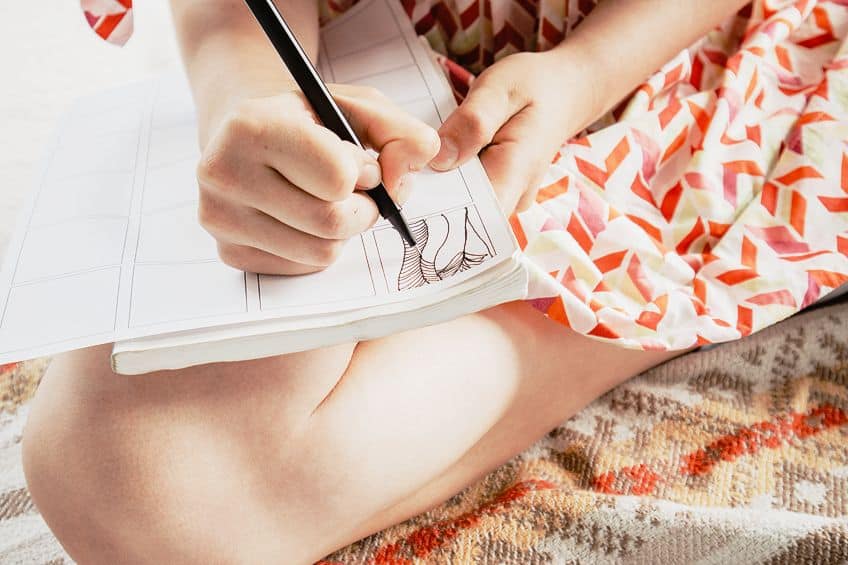
The act of doodling may be considered a type of art in progress, it may not be professional art, but you do not have to make any elaborate art piece. Even if you are only making lines or marks on a piece of paper, you are creating something and expressing yourself, and this can be considered art.
The Evolution of Doodling
The word “doodle” was first used in the early 17th century and means “a simpleton” or “a fool”. It was in the 18th century that “doodle” was used as a verb, which meant to make a fool of or to swindle. This led to the more general use of the verb doodle in modern times, which means to do nothing. Doodling is an art that is practiced by everyone including American presidents, such as Theodore Roosevelt, who doodled children and animals. Ronald Regan also doodled football players and cowboys, and John F. Kennedy doodled sailboats.
Even Hilary Clinton was caught doodling, which led people to believe she was not paying attention. However, this does not mean she was not listening to the proceedings, as doodling has been proven to help with listening and improving creativity.

Many of the world’s most influential historians were doodlers, and you will be very surprised to see how many goofy stick figures have appeared in the margins of some famous historical manuscripts. It has even been found in the mathematical field, where Stanislaw Ulam developed a visual aid for mathematics based on doodling, which he created when attending a conference.
Benefits of Doodling
Usually, when people doodle, it is out of frustration, boredom, or even to release stress. Doodling is almost like a safety valve that will enable you to release some pressure but in a non-threatening and safe way. However, there is a lot more going on as doodling opens the subconscious mind, allowing you to access ideas and concepts that you would not have considered. Doodling gives certain processes in your brain a short break while releasing other more productive processes.
Doodling has a definite physiological effect, which we will now take a closer look at.
Doodling Helps to Relieve Stress
When you feel wound up or tense, it is a good time to put pen to paper and start doodling to relieve any psychological distress. Doodling can help you to relax and unwind, as it can calm the amygdala, which is the part of your brain that controls the “fight or flight” responses that are linked to anxiety and stress. Doodling activates the brain’s ability to find certain past experiences and forward them into the present, which can help to produce a better life picture, helping you to relax.
Repeating the same shape or line brings about a state of calmness, as you are simply drawing the same thing without the fear of making any mistakes.

Doodling Improves Your Memory
In 2009, Jackie Andrade, a psychologist from the University of Plymouth in the UK, assembled 40 people and asked them to listen to a boring two-minute and 30-second telephone message. Later, they were asked to try and recall any information they could remember from the message. They were not told that they would be tested after the message. She divided the people into two groups and only told one group to shade in some square shapes on a piece of paper in front of them. They were also instructed not to be too concerned about neatness and keeping within the lines of the square shape.
Both groups were then asked to recall any information they could remember about the message. The group that did the doodling was able to recall about 30 percent more information than the group that just listened.
What was it that made the doodlers better at recalling information than the non-doodlers? By doodling, the people were held at just the correct level of arousal, which kept them from falling into a state of daydreaming. While the non-doodlers had no reason to keep them from drifting into a state of daydreaming.

Drawing without any pressure is what keep their brains more focused. In other words, paying continuous attention without doodling becomes a strain, while doodling keeps your attention without losing complete or total interest. A study was done on university students, particularly medical students, who are required to absorb a large amount of information.
They found that students who doodle for a few minutes at a time remember more information that they need to recall at a later stage.
Doodling Improves Creativity
Doodling does a great deal more than just keep you from falling asleep. The art of doodling aids in creativity, which can help you come up with more ideas that you can use for the problems that you are facing. Many famous poets and writers were doodlers, like J.K Rowling and Alexander Pushkin.
They drew the faces of their characters in the margins of their documents, which served as inspiration.
Sunni Brown, an American author, proved that doodling could stimulate certain parts of the brain and assist in processing information, allowing you to develop new ideas. She has been named one of the top ten highly creative people on Twitter.

Doodling can help in refining and generating ideas that have been in your mind for some time, which is the main reason why authors are doodlers. The faces that Alexander Pushkin doodled on the edges of his manuscripts helped them come to life in his imagination.
So, it is safe to say that many of the world’s greatest ideas are the result of doodling.
Doodling Helps to Process Your Emotions
When you feel anxious, depressed, or frustrated, you may find it difficult to express your feelings in words. When someone asks you what is wrong, you may have an image popping up in your mind that can describe those emotions, but no way of expressing it. The University of California in San Diego established a digital sketch platform named UbiSketch.
They tested it over four weeks and discovered that the users of the platform sketched images that they had in their minds, expressing their feelings.
One person sketched a frazzled brain because he felt exhausted from his job and a newborn baby. Another person sketched an exam paper looming over her head, as the deadline of her final exams was rapidly approaching.
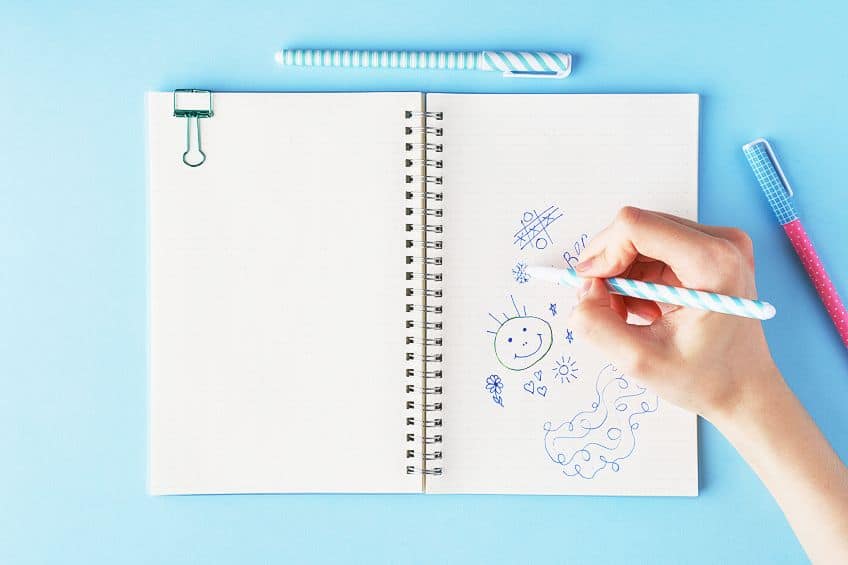
So, if you are found in a situation where you are wound up and frustrated, why not doodle that image and sketch out your feelings? Even if it is rough and not a good drawing, remember that a picture can speak a thousand words.
Doodling Can Boost Your Mood
Doodling does not only make you more creative, but it can also make you feel happier. In our preceding section on expressing your emotions by doodling, it did not matter what you sketched. However, what you draw here matters. In 2008, a study was conducted where participants were asked to sketch something that made them feel unhappy or happy. Those who chose to sketch the positive happy side experienced an elevation in their mood.
So, next time your spirits feel low, try sketching something that makes you feel happy.
Doodling Helps You to Learn More Effectively
You may think doodling during your study time is counterproductive, but studies have proven that students who doodle during assignments and lectures retain more information. This enables you to understand complex ideas as well as increase your enjoyment of study and learning. Doodling also reduces any distractions and will promote innovative thinking. These are some of the benefits you can enjoy in university, school, at work, or just life in general.
Doodling Helps to Improve Your Thinking
There is a well-known expression, “You can miss the forest for the trees”. Doodling is something that can help you take in the whole forest. When you have a problem to solve or a task to complete, you often suffer from tunnel vision, and you can only see what is directly in front of you. Doodling will help you to step backward and allows you to connect to other concepts. You can doodle ideas, even if they are in your subconscious or old memories. In other words, you are looking at the bigger picture, which can lead you to more innovative solutions to your problem.
Doodling can help you to concentrate and focus on your conscious mind, but even when daydreaming, connections can be made in your subconscious mind as well.
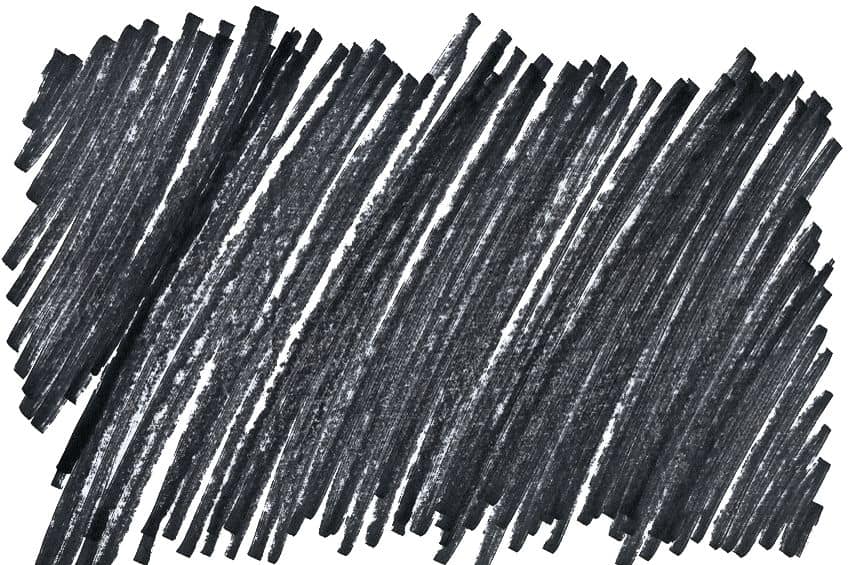
One student studying architecture was struggling to come up with an idea for a project, he was bored and doodled his signature repeatedly. Suddenly, he noticed a pattern forming between the letters. An idea sprang to mind, and he doodled a sketch, which became the cornerstone of his design that was highly successful.
Doodling Can Make You a Better Listener
We have all experienced our mind wandering when listening to someone talking to us, and our thoughts are more on personal issues. When this happens again, try to doodle. Jesse Prinz, who is a philosophy professor at the City University of New York Graduate Center, says doodling keeps your mind in a state of listening that is almost the same as meditation. Your mind is in a state where it cannot wander, and if you do not doodle, you find yourself having difficulty concentrating.
This attitude makes you a better listener, where you can concentrate and comprehend what the other person is talking about.
The Art of Doodling
Doodling has been described as mindless art, but this is far from the truth, so instead of calling it doodling, let us rather refer to it as doodle art. Many people love doodle art because they enjoy sketching, as it is relaxing and fun to do. Doodle art can be simple or more complex and intricate. Let us now consider different styles and techniques of doodle art that you can use and enjoy.
Zen Doodling
Zen doodling, also known as freestyle doodling, is sketching, or drawing lines, figures, or letters. You can even color in some of the loops or squiggles in different colors. You can create it anywhere and with any type of drawing supplies you may have at hand. The doodle can look like anything, it does not matter, the idea is for you to enjoy and relax. Here are some zen-doodling ideas for you to try.
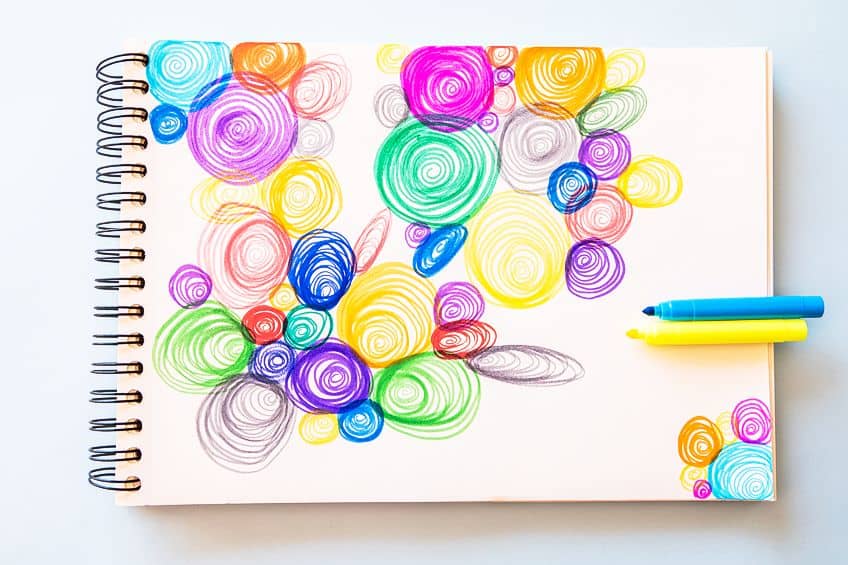
- Draw some boxes and color them in.
- Fill your page with different loops and lines.
- Draw a large triangle and then keep on adding smaller triangles inside and around it.
- Doodle your name and those of your family using different styles, like block letters, robot style, loopy letters, and even messy letters.
- In the center of your page draw a flower, then add smaller flowers all around it till you fill your page.
- Draw different sizes and shapes of leaves.
Zen Tangle
Zen tangle is a form of doodling that is made up of various doodling patterns that can be found in many books and online. These patterns all come together to create a whole art piece. It is easy to do, fun, and relaxing, and anyone can create amazing images of structured doodling patterns that are repetitive. However, zen tangling is different from zen doodling, as more thought is put into it. You are paying a lot more attention to making your doodles more cohesive, and it is not just a random squiggling of lines and letters but involves simple patterns that come together to create the final image.
Zen tangles are usually created using a small piece of square paper or board about three and a half inches, or board, which are then filled in with repetitive patterns.
Most zen tangles have specific names and ways in which each pattern is formed or drawn. There are many patterns you can learn, with names like dribbetz, cyme, ennies, fangle, among many others. The art of creating a zen tangle is known as tangling. It is a meditative art form, where the artist’s focus is on creating single lines and not a complete image. Zen tangles are usually created in black and white and should be a mindless drawing activity that looks like absolutely nothing but is created with intent and purpose. So, if your zen tangle looks like something with a specific shape or form, then it is not a zen tangle.
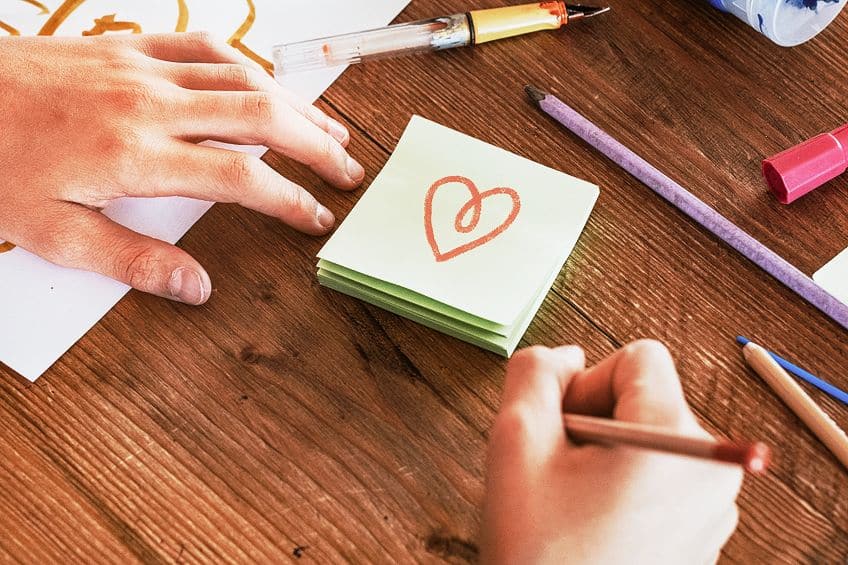
When you create a zen tangle, you need to see that it does not look like something. In other words, it has no top or bottom, no upside or downside, they are rather tangle patterns that may have some shading, but they are carefully and intentionally created. Below, you will find a few zen tangle ideas.
- Start off with a simple square shape and then begin adding zentangle patterns.
- You can also take other simple shapes, like a heart-shape, and fill with zentangle patterns.
- Use the zentangles to create beautiful butterfly wings.
- Create simple animal outlines and fill will zentangle patterns.
- How about a stylish zentangle hat?
Mandalas
The word “Mandala” is a Sanskrit word meaning “circle” and is a very old custom that has been practiced by different religions and cultures over the centuries. For example, Hindus, Buddhists, Christians, Native Americans, and many more. It was used as a spiritual or meditation tool that represented a connection to the universe but is now used as a tool to promote relaxation and mindfulness. Mandalas consist of circles or circles within squares and can be of any shape. They must have an integrated structure that is organized around the center. The mandalas consist of repetitive geometric patterns that begin in the center and then move outward.
The mandalas can have color, or they can be black and white, and they can be simple, or immensely intricate.
Mandalas are created with a purpose, like creating a connection, wholeness, or intentions, and the creator needs to remain focused on that purpose all the time they are drawing. If you feel like adding shapes, words, or patterns just let your mind flow, and the mandala is complete when you feel it is finished or when the focus has been lost. There is even a specific color chart for the colors of your mandala. So, here is a list of the colors and their symbolic meaning, which will allow you to pick the color that you feel goes with your mandala.
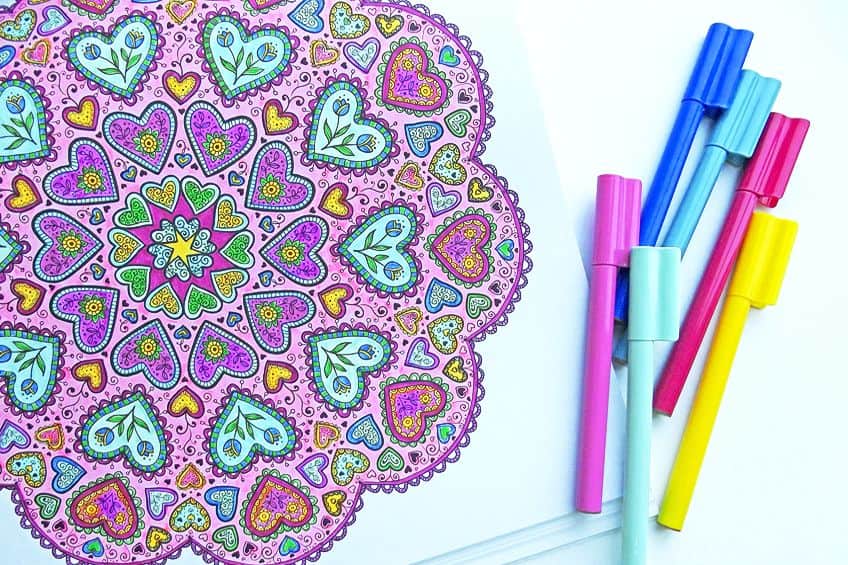
- Pink: represents intuition, love, and femininity.
- Red: represents high energy, strength, and passion.
- Yellow: represents wisdom, laughter, learning, and happiness.
- Orange: represents transformation, creativity, intuition, and self-awareness.
- Blue: represents inner peace, emotional healing, and meditation.
- Green: represents psychic ability, physical healing, caring, and love of nature.
- White: represents spiritual focus.
- Purple: represents all spiritual things.
- Black: represents deep thinking, mystery, and individuality.
Doodling and Education
Traditionally the art of doodling has been regarded as a distraction from learning, but psychological research has shown that doodling in the classroom can be of great benefit to the student in learning, attention, memory, stress relief, and increased focus. For many students, the conventional way of learning does not work, and doodling can be a way of improving the student’s ability to concentrate. In some schools, the teachers are beginning to include doodling as part of the curriculum.
Doodling in schools and places of learning should not be discouraged but rather used as a potential avenue where educators can find the best methods that will help the students to learn and retain information.
Doodling in the Workplace
When you next find yourself at work with a problem, and you cannot find the answer, why not take out a piece of paper and a pen or pencil and start doodling? By just drawing random shapes, lines, or figures, you will be able to improve your memory, boost your creativity, increase your productivity, or just help yourself relax. Researchers have proven that doodling has some amazing benefits for everybody, including at your workplace. Doodling will help to improve your memory to recall information that was spoken in meetings.
It will boost your creativity and will give you the ability to think outside the box, making you more efficient in your job. Doodling will also help you to relax and reduce any stress you may be going through.

Doodling makes an excellent brainstorming technique, each member gets a piece of paper and a pencil, then each one doodles an image that comes to mind. Then the papers are passed around to the person next to them, and they add to that first sketch. The papers are then collected, and each sketch is discussed to see how many innovative ideas come to mind.
How to Doodle
Doodling is a great way to pass the time when you are bored, which can strike anytime or place. So, you need to always be prepared by carrying a notebook and pencil with you so you can create doodles. Here are some simple steps to follow when learning how to doodle. First, here are some basic doodling supplies that you will need.
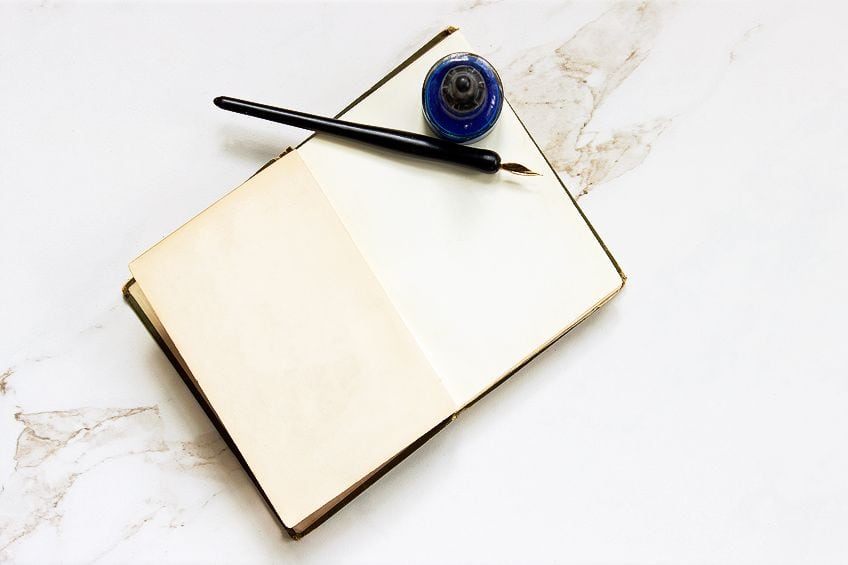
- Pencil or pen
- Highlighter
- Marker
Whenever you want to doodle, just pick up your pen or pencil and start to doodle. You can sketch an event, an act, a feeling, a place, a person, your name, or anything that comes to mind, even if it is only a few lines and squiggles. As soon as you start, you will find that inspiration will come. Doodle ideas can include flowers, faces, words, or numbers using different types of figures and letters, or animals like your pet cat or dog or some scary monsters. Just look around you for doodle ideas, such as a tree, or people walking, or doodle what you can hear, like a song or what your teacher or lecturer is talking about.
Remember, doodling does not have to be perfect, and it does not have to resemble something or somebody.
Doodling is simply an expression of your feelings and what you are thinking. So, have some fun as there are no rules to follow and there are no deadlines to meet. Doodling is not just some random scribbling. Doctor Robert Burns, who was the director of the Institute of Human Development, made use of doodles to diagnose some of his patient’s emotional problems. He shares how doodling shows what is happening in our subconscious minds, and just as an EEG transmits brain activity onto a piece of paper, so your hand works in a similar way.

So, when you find yourself struggling and unable to concentrate, then doodling may be just the thing that you need. It will give your brain the ability to focus and allows you to be more creative, helping you to solve problems that you might be experiencing.
The art of doodling has been given a bad name in the past, but it has proven to be beneficial to students as well as employees, as it helps to improve memory and reduces stress. The main advantage of doodling is that it can be done by anyone, even if you do not have an artistic background. All you need to do is sketch some basic shapes or lines and you are doodling, and with some more practice, you can become a master in doodle art!
Frequently Asked Questions
Is Doodling the Same As Drawing?
Doodling art is not as challenging as drawing, which is a skill you must learn. What is doodling? It is creating simple lines and basic shapes on paper. You are not trying to create something perfect, and the process is done more on a subconscious level. You are merely expressing yourself on the paper.
What Are the Main Benefits of Doodling?
Research has proven that people who doodle during a lecture or class are paying attention to what is being said, and that they can recall a lot of the information that was discussed. Their brain remains engaged, and their memory is improved. The main benefit of doodling is to help you remain focused and improve your frame of mind. Research has shown that doodling can uplift your mood and has the same effect on your brain as laughing or eating chocolate.
What Is the Psychology Behind Doodling?
Doodling can enhance your thinking and balances your mental state between daydreaming and awareness, enabling you to come up with new and creative ideas. It also produces a state of relaxation.
In 2005, Charlene completed her Wellness Diplomas in Therapeutic Aromatherapy and Reflexology from the International School of Reflexology and Meridian Therapy. She worked for a company offering corporate wellness programs for a couple of years, before opening up her own therapy practice. It was in 2015 that a friend, who was a digital marketer, asked her to join her company as a content creator, and this is where she found her excitement for writing.
Since joining the content writing world, she has gained a lot of experience over the years writing on a diverse selection of topics, from beauty, health, wellness, travel, and more. Due to various circumstances, she had to close her therapy practice and is now a full-time freelance writer. Being a creative person, she could not pass up the opportunity to contribute to the Art in Context team, where is was in her element, writing about a variety of art and craft topics. Contributing articles for over three years now, her knowledge in this area has grown, and she has gotten to explore her creativity and improve her research and writing skills.
Charlene Lewis has been working for artincontext.org since the relaunch in 2020. She is an experienced writer and mainly focuses on the topics of color theory, painting and drawing.
Learn more about Charlene Lewis and the Art in Context Team.
Cite this Article
Charlene, Lewis, “What Is Doodling? – Enhance Your Creativity Through Doodling.” Art in Context. August 15, 2023. URL: https://artincontext.org/what-is-doodling/
Lewis, C. (2023, 15 August). What Is Doodling? – Enhance Your Creativity Through Doodling. Art in Context. https://artincontext.org/what-is-doodling/
Lewis, Charlene. “What Is Doodling? – Enhance Your Creativity Through Doodling.” Art in Context, August 15, 2023. https://artincontext.org/what-is-doodling/.









